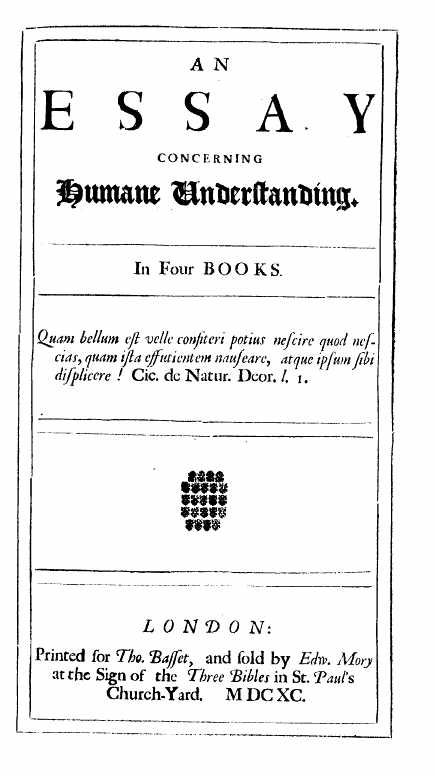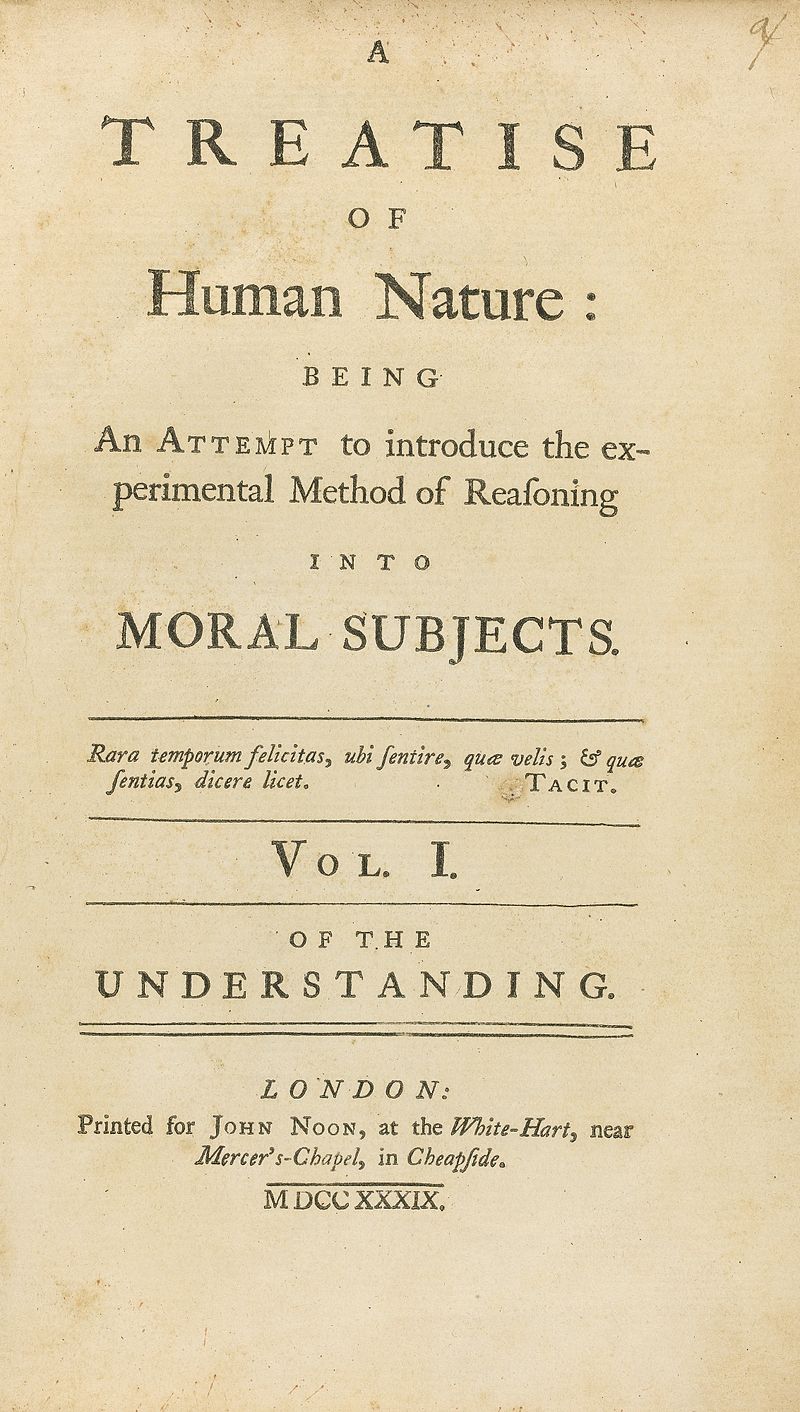
人格の同一性
Personal identity

"Will be same identity before and after
drinking coffee?" he asked.
☆ 人格の同一性・パーソナルアイデンティティ(personal identity)とは、時間の経過に伴う、ある人物のユニークな数値的同一性のことである。個人的同一性に関する議論は通常、ある時点の人物と別の時点 の人物が、時間を通じて持続する同一人物であると言えるための必要十分条件を決定することを目的としている。 哲学においては、個人の同一性の問題は、ある時間間隔にわたってどのようにして一人の人間を識別することができるかに関係し、「ある時点の人間が別の時点 の人間と同じものであると言えるのはなぜか?」あるいは 「私たちはどのような種類の人間なのか?」といった問いを扱う。 現代の形而上学では、個人的同一性の問題は個人的同一性の通時的問題と呼ばれている。分析哲学と大陸哲学はどちらもアイデンティティの本質について探究し ている。大陸哲学は、世界とその本質に関する異なる哲学的命題、仮定、前提に直面したときに、概念的に同一性を維持することを扱う。
| Personal
identity is
the unique numerical identity of a person over time.[1][2] Discussions
regarding personal identity typically aim to determine the necessary
and sufficient conditions under which a person at one time and a person
at another time can be said to be the same person, persisting through
time. In philosophy, the problem of personal identity[3] is concerned with how one is able to identify a single person over a time interval, dealing with such questions as, "What makes it true that a person at one time is the same thing as a person at another time?" or "What kinds of things are we persons?" In contemporary metaphysics, the matter of personal identity is referred to as the diachronic problem of personal identity.[a][4] The synchronic problem concerns the question of what features and traits characterize a person at a given time. Analytic philosophy and continental philosophy both inquire about the nature of identity. Continental philosophy deals with conceptually maintaining identity when confronted by different philosophic propositions, postulates, and presuppositions about the world and its nature.[5][6] |
人格的同一性・パーソナルアイデンティティ(personal
identity)とは、時間の経過に伴う、ある人物のユニークな数値的同一性のことである[1][2]。個人的同一性に関する議論は通常、ある時点の人
物と別の時点の人物が、時間を通じて持続する同一人物であると言えるための必要十分条件を決定することを目的としている。 哲学においては、個人の同一性の問題[3]は、ある時間間隔にわたってどのようにして一人の人間を識別することができるかに関係し、「ある時点の人間が別 の時点の人間と同じものであると言えるのはなぜか?」あるいは 「私たちはどのような種類の人間なのか?」といった問いを扱う。 現代の形而上学では、個人的同一性の問題は個人的同一性の通時的問題[a][4]と呼ばれている。分析哲学と大陸哲学はどちらもアイデンティティの本質に ついて探究している。大陸哲学は、世界とその本質に関する異なる哲学的命題、仮定、前提に直面したときに、概念的に同一性を維持することを扱う[5] [6]。 |
| Continuity of substance Bodily substance Further information: Materialism See also: Physicalism and Further facts One way to explain how persons persist over time is to say that identity consists in physical or bodily continuity.[7][8] However, there are problems with this view. As the Ship of Theseus thought experiment illustrates, even for inanimate objects there are difficulties in determining whether one physical body at one time is the same thing as a physical body at another time. With humans, over time our bodies age and grow, losing and gaining matter, and over sufficient years will not consist of most of the matter they once consisted of. It is thus problematic to ground the persistence of personal identity over time in the continuous existence of our bodies. Nevertheless, this approach has its supporters, who define humans as biological organisms. They assert the proposition that a psychological relation is not necessary for personal continuity.[b] This personal identity ontology assumes the relational theory[9] of life-sustaining processes instead of bodily continuity. The teletransportation problem proposed by Derek Parfit is designed to bring out intuitions about corporeal continuity. The thought experiment discusses cases in which a person is teleported from Earth to Mars. Ultimately, the inability to specify where on a spectrum the transmitted person stops being identical to the initial person on Earth appears to show that having a numerically identical physical body is not the criterion for personal identity.[10] Mental substance Further information: Mind-body dualism, Monism, and Mind–body problem See also: Idealism and Pluralism (philosophy) In another concept of mind, the set of cognitive faculties[c] are considered to consist of an immaterial substance, separate from and independent of the body.[11] If a person is then identified with their mind, rather than their body—if a person is considered to be their mind—and their mind is such a non-physical substance, then personal identity over time may be grounded in the persistence of this non-physical substance, despite the continuous change in the substance of the body it is associated with. The mind-body problem[12][13][14][15] concerns the explanation of the relationship, if any, that exists between minds, or mental processes, and bodily states or processes. One of the aims of philosophers who work in this area is to explain how a non-material mind can influence a material body and vice versa. This is controversial and problematic, and adopting it as a solution raises questions. Perceptual experiences depend on stimuli which arrive at various sensory organs from the external world and these stimuli cause changes in mental states; ultimately causing sensation.[d] A desire for food, for example, will tend to cause a person to move their body in a manner and in a direction to obtain food. The question, then, is how it can be possible for conscious experiences to arise out of an organ (the human brain) possessing electrochemical properties. A related problem is to explain how propositional attitudes (e.g. beliefs and desires) can cause neurons of the brain to fire and muscles to contract in the correct manner. These comprise some of the puzzles that have confronted epistemologists and philosophers of mind from at least the time of René Descartes. https://en.wikipedia.org/wiki/Personal_identity |
物質の継続性 身体的物質 さらなる情報 物質主義 も参照のこと: 物理主義およびさらなる事実 時間が経っても人が存在し続けることを説明する1つの方法は、同一性は物理的または身体的な連続性によって成り立っていると言うことである[7][8]。 しかし、この見解には問題がある。テセウスの船」の思考実験が示すように、無生物であっても、ある時点の肉体が別の時点の肉体と同じものであるかどうかを 判断するのは困難である。人間の場合、時間の経過とともに肉体は老化し、成長し、物質を失ったり得たりする。したがって、時間の経過に伴う個人のアイデン ティティの持続を、肉体の継続的な存在に根拠づけるのは問題がある。とはいえ、このアプローチには支持者もおり、彼らは人間を生物として定義している。こ の個人的アイデンティティ存在論は、身体の連続性の代わりに生命維持過程の関係論[9]を前提としている。 デレク・パーフィットが提唱した遠隔移動問題は、身体的連続性に関する直観を引き出すように設計されている。この思考実験では、人が地球から火星にテレ ポートした場合について論じている。最終的に、転送された人物が地球上の最初の人物と同一であることをスペクトル上のどこで止めるかを特定できないこと は、数値的に同一の肉体を持つことが個人の同一性の基準ではないことを示しているように見える[10]。 精神物質 さらなる情報 心身二元論、一元論、心身問題 以下も参照のこと: 観念論と多元主義(哲学) 心の別の概念では、一連の認識能力[c]は、身体から分離し独立した非物質的な物質から構成されていると考えられている[11]。もし人が身体ではなく心 と同一視されるのであれば、つまり人が心であると考えられるのであれば、そしてその心がそのような非物質的な物質であるのであれば、時間の経過に伴う個人 の同一性は、それが関連付けられている身体の物質が連続的に変化しているにもかかわらず、この非物質的な物質が持続していることに根拠づけられるかもしれ ない。 心身問題[12][13][14][15]は、心や精神的プロセスと身体的状態やプロセスとの間に関係が存在するとすれば、その説明に関するものである。 この領域に取り組む哲学者たちの目的の一つは、非物質的な心が物質的な身体にどのような影響を与えることができるのか、またその逆はどのような影響を与え ることができるのかを説明することである。 これには論争や問題があり、解決策としてこれを採用することには疑問が残る。知覚経験は、外界から様々な感覚器官に到達する刺激に依存し、これらの刺激が 精神状態の変化を引き起こし、最終的に感覚を引き起こす。そこで問題となるのは、電気化学的特性を持つ器官(人間の脳)から意識的な体験が生じるのはなぜ なのかということである。関連する問題は、命題となる態度(信念や願望など)が、どのようにして脳の神経細胞を発火させ、筋肉を正しい方向に収縮させるの かを説明することである。これらは、少なくともルネ・デカルトの時代から、認識論者や心の哲学者が直面してきたパズルの一部である。 |
| Personal identity Part 3 argues for a reductive account of personal identity; rather than accepting the claim that our existence is a deep, significant fact about the world, Parfit's account of personal identity is like this: At time 1, there is a person. At a later time 2, there is a person. These people seem to be the same person. Indeed, these people share memories and personality traits. But there are no further facts in the world that make them the same person. Parfit's argument for this position relies on our intuitions regarding thought experiments such as teleportation, the fission and fusion of persons, gradual replacement of the matter in one's brain, gradual alteration of one's psychology, and so on. For example, Parfit asks the reader to imagine entering a "teletransporter," a machine that puts you to sleep, then destroys you, breaking you down into atoms, copying the information and relaying it to Mars at the speed of light. On Mars, another machine re-creates you (from local stores of carbon, hydrogen, and so on), each atom in exactly the same relative position. Parfit poses the question of whether or not the teletransporter is a method of travel—is the person on Mars the same person as the person who entered the teletransporter on Earth? Certainly, when waking up on Mars, you would feel like being you, you would remember entering the teletransporter in order to travel to Mars, you would even feel the cut on your upper lip from shaving this morning. Then the teleporter is upgraded. The teletransporter on Earth is modified to not destroy the person who enters it, but instead it can simply make infinite replicas, all of whom would claim to remember entering the teletransporter on Earth in the first place. Using thought experiments such as these, Parfit argues that any criteria we attempt to use to determine sameness of person will be lacking, because there is no further fact. What matters, to Parfit, is simply "Relation R," psychological connectedness, including memory, personality, and so on. Parfit continues this logic to establish a new context for morality and social control. He cites that it is morally wrong for one person to harm or interfere with another person and it is incumbent on society to protect individuals from such transgressions. That accepted, it is a short extrapolation to conclude that it is also incumbent on society to protect an individual's "Future Self" from such transgressions; tobacco use could be classified as an abuse of a Future Self's right to a healthy existence. Parfit resolves the logic to reach this conclusion, which appears to justify incursion into personal freedoms, but he does not explicitly endorse such invasive control. Parfit's conclusion is similar to David Hume's bundle theory, and also to the view of the self in Buddhism's Skandha, though it does not restrict itself to a mere reformulation of them. For besides being reductive, Parfit's view is also deflationary: in the end, "what matters" is not personal identity, but rather mental continuity and connectedness. https://en.wikipedia.org/wiki/Reasons_and_Persons#teletransportation_problem |
個人のアイデンティティ 第3部では、個人的アイデンティティの還元的な説明を主張する。パーフィットの個人的アイデンティティの説明は、私たちの存在が世界に関する深く重要な事 実であるという主張を受け入れるのではなく、次のようなものである: 時刻1に人がいる。後の時間2にも人がいる。これらの人々は同一人物のように見える。確かに、これらの人々は記憶や性格的特徴を共有している。しかし、同 一人物であることを示すそれ以上の事実は、この世界には存在しない。 この立場を主張するパーフィットの論拠は、テレポーテーション、人物の核分裂と融合、自分の脳の物質の段階的な入れ替え、自分の心理の段階的な変化などの 思考実験に関する我々の直観に依拠している。例えば、パーフィットは読者に「テレトランスポーター」に入ることを想像するよう求めている。「テレトランス ポーター」とは、あなたを眠らせた後、あなたを破壊し、原子に分解し、情報をコピーして光速で火星に中継する機械である。火星では、別の機械が(炭素や水 素などの現地の貯蔵物から)あなたを再創造し、各原子はまったく同じ相対位置にある。パーフィットは、テレ・トランスポーターが移動手段なのかどうかとい う疑問を投げかけている。火星にいる人間は、地球でテレ・トランスポーターに乗り込んだ人間と同一人物なのだろうか?確かに、火星で目覚めたとき、自分は 自分であると感じるだろうし、火星に行くためにテレ・トランスポーターに入ったことを覚えているだろうし、今朝ヒゲを剃ったときの上唇の切り傷さえ感じる だろう。 そしてテレポーターはアップグレードされる。地球上のテレ・トランスポーターは、そこに入った人間を破壊しないように改造されている。その代わり、単に無 限の複製を作ることができ、その複製はすべて、最初に地球上のテレ・トランスポーターに入ったことを覚えていると主張する。 このような思考実験を用いて、パーフィットは、人の同一性を判断するために我々が使おうとする基準は、それ以上の事実が存在しないため、欠如していると主 張する。パーフィットにとって重要なのは、単に「関係R」であり、記憶や人格などを含む心理的なつながりである。 パーフィットはこの論理を続けて、道徳と社会統制の新しい文脈を確立する。彼は、ある人が他の人に危害を加えたり干渉したりすることは道徳的に間違ってお り、そのような違反から個人を保護することが社会の責務であることを挙げている。タバコの使用は、健康的な存在に対する未来の自己の権利の乱用に分類され る。パーフィットはこの結論に至る論理を解き明かし、個人の自由への侵犯を正当化しているように見えるが、そのような侵犯的コントロールを明確に支持して いるわけではない。 パーフィットの結論は、デイヴィッド・ ヒュームの束理論(bundle theory)や、仏教のスカンダにおける自己観に似ているが、それらを単に再定式化したものにとどまらない。還元的であるだけでなく、パー フィットの見解はデフレ的でもある。結局、「重要なのは」個人のアイデンティティではなく、むしろ精神的な連続性とつながりなのだ。 |
| Personal
identity Continuity of consciousness Locke's conception  An Essay Concerning Human Understanding in four books (1690) by John Locke (1632–1704) John Locke considered personal identity (or the self) to be founded on consciousness (viz. memory), and not on the substance of either the soul or the body.[16] Chapter 27 of Book II of his Essay Concerning Human Understanding (1689), entitled "On Identity and Diversity", has been said to be one of the first modern conceptualizations of consciousness as the repeated self-identification of oneself. Through this identification, moral responsibility could be attributed to the subject and punishment and guilt could be justified, as critics such as Nietzsche would point out. According to Locke, personal identity (the self) "depends on consciousness, not on substance" nor on the soul. We are the same person to the extent that we are conscious of the past and future thoughts and actions in the same way as we are conscious of present thoughts and actions. If consciousness is this "thought" which "goes along with the substance…which makes the same person," then personal identity is only founded on the repeated act of consciousness: "This may show us wherein personal identity consists: not in the identity of substance, but…in the identity of consciousness." For example, one may claim to be a reincarnation of Plato, therefore having the same soul substance. One would be the same person as Plato only if one had the same consciousness of Plato's thoughts and actions that he himself did. Therefore, self-identity is not based on the soul. One soul may have various personalities. Neither is self-identity founded on the body substance, argues Locke, as the body may change while the person remains the same. Even the identity of animals is not founded on their body: "animal identity is preserved in identity of life, and not of substance," as the body of the animal grows and changes during its life. On the other hand, identity of humans is based on their consciousness.[e] This border case leads to this problematic thought that since personal identity is based on consciousness, and only oneself can be aware of one's consciousness, exterior human judges may never know if they are really judging—and punishing—the same person, or simply the same body. In other words, Locke argues that one may be judged only for the acts of the body, as this is what is apparent to all but God. We are only responsible for the acts of which we are conscious. This forms the basis of the insanity defense—one cannot be held accountable for acts of which one was unconscious—and therefore leads to philosophical questions: personal identity consists [not in the identity of substance] but in the identity of consciousness, wherein if Socrates and the present mayor of Queenborough agree, they are the same person: if the same Socrates waking and sleeping do not partake of the same consciousness, Socrates waking and sleeping is not the same person. And to punish Socrates waking for what sleeping Socrates thought, and waking Socrates was never conscious of, would be no more right, than to punish one twin for what his brother-twin did, whereof he knew nothing, because their outsides were so like, that they could not be distinguished; for such twins have been seen.[17] Or again: PERSON, as I take it, is the name for this self. Wherever a man finds what he calls himself, there, I think, another may say is the same person. It is a forensic term, appropriating actions and their merit; and so belong only to intelligent agents, capable of a law, and happiness, and misery. This personality extends itself beyond present existence to what is past, only by consciousness,—whereby it becomes concerned and accountable; owns and imputes to itself past actions, just upon the same ground and for the same reason as it does the present. All which is founded in a concern for happiness, the unavoidable concomitant of consciousness; that which is conscious of pleasure and pain, desiring that that self that is conscious should be happy. And therefore whatever past actions it cannot reconcile or APPROPRIATE to that present self by consciousness, it can be no more concerned in it than if they had never been done: and to receive pleasure or pain, i.e. reward or punishment, on the account of any such action, is all one as to be made happy or miserable in its first being, without any demerit at all. For, supposing a MAN punished now for what he had done in another life, whereof he could be made to have no consciousness at all, what difference is there between that punishment and being CREATED miserable? And therefore, conformable to this, the apostle tells us, that, at the great day, when every one shall 'receive according to his doings, the secrets of all hearts shall be laid open.' The sentence shall be justified by the consciousness all person shall have, that THEY THEMSELVES, in what bodies soever they appear, or what substances soever that consciousness adheres to, are the SAME that committed those actions, and deserve that punishment for them.[17] Henceforth, Locke's conception of personal identity founds it not on the substance or the body, but in the "same continued consciousness", which is also distinct from the soul since the soul may have no consciousness of itself (as in reincarnation). He creates a third term between the soul and the body. For Locke, the body may change, while consciousness remains the same.[18][19] Therefore, personal identity, for Locke, is not in the body but in consciousness. Philosophical intuition Bernard Williams presents a thought experiment appealing to the intuitions about what it is to be the same person in the future.[20] The thought experiment consists of two approaches to the same experiment. For the first approach Williams suggests that suppose that there is some process by which subjecting two persons to it can result in the two persons have "exchanged" bodies. The process has put into the body of person B the memories, behavioral dispositions, and psychological characteristics of the person who prior to undergoing the process belonged to person A; and conversely with person B. To show this one is to suppose that before undergoing the process person A and B are asked to which resulting person, A-Body-Person or B-Body-Person, they wish to receive a punishment and which a reward. Upon undergoing the process and receiving either the punishment or reward, it appears to that A-Body-Person expresses the memories of choosing who gets which treatment as if that person was person B; conversely with B-Body-Person. This sort of approach to the thought experiment appears to show that since the person who expresses the psychological characteristics of person A to be person A, then intuition is that psychological continuity is the criterion for personal identity. The second approach is to suppose that someone is told that one will have memories erased and then one will be tortured. Does one need to be afraid of being tortured? The intuition is that people will be afraid of being tortured, since it will still be one despite not having one's memories. Next, Williams asked one to consider several similar scenarios.[f] Intuition is that in all the scenarios one is to be afraid of being tortured, that it is still one's self despite having one's memories erased and receiving new memories. The last scenario is identical to the first.[g] In the first approach, intuition is to show that one's psychological continuity is the criterion for personal identity, but in second approach, intuition is that it is one's bodily continuity that is the criterion for personal identity. To resolve this conflict Williams feels one's intuition in the second approach is stronger and if he was given the choice of distributing a punishment and a reward he would want his body-person to receive the reward and the other body-person to receive the punishment, even if that other body-person has his memories. Psychological continuity In psychology, personal continuity, also called personal persistence or self-continuity, is the uninterrupted connection concerning a particular person of their private life and personality. Personal continuity is the union affecting the facets arising from personality in order to avoid discontinuities from one moment of time to another time.[h][21] Personal continuity is an important part of identity; this is the process of ensuring that the qualities of the mind, such as self-awareness, sentience, sapience, and the ability to perceive the relationship between oneself and one's environment, are consistent from one moment to the next. Personal continuity is the property of a continuous and connected period of time[22][23] and is intimately related to do with a person's body or physical being in a single four-dimensional continuum.[24] Associationism, a theory of how ideas combine in the mind, allows events or views to be associated with each other in the mind, thus leading to a form of learning. Associations can result from contiguity, similarity, or contrast. Through contiguity, one associates ideas or events that usually happen to occur at the same time. Some of these events form an autobiographical memory in which each is a personal representation of the general or specific events and personal facts. Ego integrity is the psychological concept of the ego's accumulated assurance of its capacity for order and meaning. Ego identity is the accrued confidence that the inner sameness and continuity prepared in the past are matched by the sameness and continuity of one's meaning for others, as evidenced in the promise of a career. Body and ego control organ expressions[25][26][27][28][29] and of the other attributes of the dynamics of a physical system to face the emotions of ego death[30][31] in circumstances which can summon, sometimes, anti-theonymistic self-abandonment.[25][32][33][34][35][36] Identity continuum See also: § The no-self theory, and Self-discovery It has been argued from the nature of sensations and ideas that there is no such thing as a permanent identity.[37] Daniel Shapiro asserts that one of four major views on identity does not recognize a "permanent identity" and instead thinks of "thoughts without a thinker"—"a consciousness shell with drifting emotions and thoughts but no essence". According to him this view is based on the Buddhist concept of anatta, "a continuously evolving flow of awareness."[38] Malcolm David Eckel states that "the self changes at every moment and has no permanent identity"[39]—it is a "constant process of changing or becoming;" a "fluid ever-changing self."[40] |
人格的同一性・パーソナルアイデンティティ(personal
identity)にもどる 意識の連続性 ロックの概念  ジョン・ロック(1632-1704)による『人間理解に関する試論』(1690年)全4巻 ジョン・ロックは、個人の同一性(あるいは自己)は、魂や肉体の実体ではなく、意識(すなわち記憶)に基礎を置くと考えた[16]。『人間理解に関する試 論』(1689年)の第二巻の第二十七章「同一性と多様性について」は、意識を自分自身の反復的な自己同一化として捉える最初の近代的な概念化の一つと言 われている。この同一化を通じて、ニーチェなどの批評家が指摘するように、道徳的責任が主体に帰属し、罰や罪が正当化されることになる。 ロックによれば、個人の同一性(自己)は「意識に依存するのであって、物質に依存するのではない」し、魂にも依存しない。現在の思考や行動を意識するのと 同じように、過去や未来の思考や行動を意識する限りにおいて、私たちは同一人物なのである。意識がこの「思考」であり、それが「物質とともにある...同 一人物を作る」ものであるならば、個人の同一性は意識という行為の繰り返しの上にのみ成立することになる: 「このことは、個人の同一性がどこから成り立つかを示してくれるかもしれない。例えば、人はプラトンの生まれ変わりであり、同じ魂の実体を持つと主張する かもしれない。プラトンと同一人物であるのは、プラトンの思考と行動に対して、プラトン自身と同じ意識を持っている場合だけである。したがって、自己同一 性は魂に基づくものではない。ひとつの魂がさまざまな人格を持つこともある。 ロックは、自己同一性は肉体にも基づかない、肉体は変化しても人格は変わらない、と主張する。動物の同一性さえも、その肉体に基づくものではない: 「動物の同一性は、生命の同一性において保たれるのであって、実体において保たれるのではない」。一方、人間のアイデンティティは意識に基づいている。 この境界のケースは、個人の同一性は意識に基づくものであり、自分の意識を自覚できるのは自分自身だけであるため、外見上の人間の裁判官は、自分が本当に 同じ人間を裁き、罰しているのか、それとも単に同じ肉体を裁いているだけなのかを知ることができないかもしれないという、この問題意識につながる。言い換 えれば、ロックは、人は肉体の行為に対してのみ裁かれる可能性があると主張する。私たちは、自分が意識している行為に対してのみ責任を負う。これは心神喪 失の抗弁の基礎をなすものであり、無意識に行った行為について責任を問われることはない: ソクラテスと現クィーンボロ市長が同意すれば、彼らは同一人物である。もし、起きているソクラテスと寝ているソクラテスが同じ意識を持っていなければ、起 きているソクラテスと寝ているソクラテスは同一人物ではない。寝ているソクラテスが考え、起きているソクラテスが意識したことのないことについて、起きて いるソクラテスを罰することは、双子の兄弟が行ったことについて、双子を罰することよりも正しいことではないだろう。 あるいはまた: パーソンとは、この自己の名前である。人が自分自身と呼ぶものを見出すところならどこでも、別の人が同じ人だと言うかもしれない。これは法医学的な用語で あり、行為とその功徳を表す。つまり、法則を持ち、幸福と不幸をもたらすことのできる知的行為者にのみ属するものである。この人格は、意識によってのみ、 現在の存在を超えて過去の存在にまで自らを拡張し、それによって関心を持ち、責任を負うようになる。喜びと苦痛を意識するものは、意識する自己が幸福であ ることを望む。それゆえ、意識によって現在の自己に和解させることも適用することもできない過去の行為が何であれ、それが行われなかった場合と同じよう に、その行為に関心を持つことはできないのである。というのは、仮にある人間が、別の生でしてしまったことのために、今罰せられているとしよう。それゆ え、使徒は、大いなる日に、すべての人が「自分の行いに従って受けるとき、すべての心の秘密が打ち明けられる」と告げている。その判決は、すべての人が、 自分自身が、どのような身体であれ、どのような物質に意識が付着していようとも、それらの行為を行った者であり、それらの行為に対してその罰を受けるに値 する者である、という意識を持つことによって正当化されるであろう[17]。 それゆえ、ロックの個人的同一性の概念は、それを物質や身体ではなく、「同じ継続した意識」に見出す。ロックは魂と肉体の間に第三項を設けた。ロックに とって、肉体は変化しても、意識は変わらないのである[18][19]。したがって、ロックにとっての個人の同一性は、肉体にあるのではなく、意識にある のである。 哲学的直観 バーナード・ウィリアムズは、未来において同じ人間であるとは何かについての直観に訴える思考実験を提示している。 最初のアプローチとして、ウィリアムズは、二人の人物をあるプロセスにかけることで、二人の人物の身体が「交換」されたと仮定する。このプロセスを受ける 前に、A人とB人は、A-身体-人とB-身体-人のどちらの結果の人に罰と報酬を与えたいか尋ねられたとする。プロセスを受け、罰か報酬のどちらかを受け ると、A身体人は、その人がB身体人であるかのように、どちらの治療を受けるかを選んだ記憶を表現するように見える。 このような思考実験へのアプローチは、A人の心理的特徴を表現する人はA人であるため、心理的連続性が個人の同一性の基準であることを直感的に示している ように見える。 第二のアプローチは、ある人が記憶を消され、拷問を受けると告げられたとする。人は拷問されることを恐れる必要があるだろうか?直感的には、人は拷問され ることを恐れるだろう。次に、ウィリアムズはいくつかの似たようなシナリオを考えるよう求めた[f]。直観は、すべてのシナリオにおいて、人は拷問される ことを恐れるべきであり、自分の記憶が消去され、新しい記憶を受けているにもかかわらず、それは依然として自分自身であるということである。最後のシナリ オは最初のシナリオと同じである[g]。 第一のアプローチでは、自分の心理的連続性が個人的アイデンティティの基準であることを直観が示すが、第二のアプローチでは、自分の身体的連続性が個人的 アイデンティティの基準であることを直観が示す。この対立を解決するために、ウィリアムズは第二のアプローチにおける自分の直観の方が強いと感じ、もし罰 と報酬を分配する選択が与えられたとしたら、自分の肉体には報酬を、もう一人の肉体には罰を、たとえそのもう一人の肉体が自分の記憶を持っていたとして も、受けさせたいと考える。 心理学的連続性 心理学では、個人的継続性(個人的持続性または自己継続性とも呼ばれる)とは、特定の人に関する、その人の私生活や人格の途切れることのない結びつきのこ とである。個人の継続性とは、ある瞬間から別の瞬間への不連続性を避けるために、人格から生じる諸側面に影響を与える結合である[h][21]。 個人の連続性はアイデンティティの重要な部分であり、これは自己認識、感覚、賢さ、自分と環境との関係を知覚する能力などの心の特質が、ある瞬間から次の 瞬間まで一貫していることを保証するプロセスである。個人的な連続性とは、連続的でつながりのある期間[22][23]の性質であり、1つの4次元の連続 体における人の身体や肉体的存在と密接に関係している[24]。連想主義とは、心の中で考えがどのように組み合わされるかについての理論であり、出来事や 見解が心の中で互いに関連付けられることを可能にし、その結果、学習の一形態をもたらす。連想は連続性、類似性、対照性から生じる。連続性によって、人は 通常同時に起こるアイデアや出来事を連想する。これらの出来事のいくつかは自伝的記憶を形成し、その中ではそれぞれが一般的または具体的な出来事と個人的 事実を個人的に表現している。 自我の完全性とは、自我がその秩序と意味の能力を保証するために蓄積した心理学的概念である。自我同一性とは、過去に準備された内面的な同一性と連続性 が、キャリアの約束で証明されるように、他者にとっての自分の意味の同一性と連続性と一致するという、蓄積された確信である。身体と自我は臓器の表現 [25][26][27][28][29]や身体システムの力学の他の属性の制御を行い、自我の死の感情[30][31]に直面する。 アイデンティティの連続体 以下も参照: § 無我理論、自己発見 ダニエル・シャピロ(Daniel Shapiro)は、アイデンティティに関する4つの主要な見解の1つが「永続的なアイデンティティ」を認めず、その代わりに「考える者のいない思考」、 すなわち「漂う感情や思考を持つが本質を持たない意識の殻」を考えていると主張している[37]。マルコム・デイヴィッド・エッケルは、「自己はあらゆる 瞬間に変化し、永続的なアイデンティティを持たない」[39]-それは「変化する、あるいはなりつつある絶え間ないプロセス」であり、「流動的な変化し続 ける自己」であると述べている[40]。 |
Bundle theory of the self A Treatise Of Human Nature: Being An Attempt To Introduce The Experimental Method Of Reasoning Into Moral Subjects. For John Noon, 1739 David Hume undertook looking at the mind–body problem. Hume also investigated a person's character, the relationship between human and animal nature, and the nature of agency. Hume pointed out that we tend to think that we are the same person we were five years ago. Though we've changed in many respects, the same person appears present now as was present then. We might start thinking about which features can be changed without changing the underlying self. Hume denied a distinction between the various features of a person and the mysterious self that supposedly bears those features. When we begin introspecting: [We] always stumble on some particular perception or other.… I may venture to affirm of the rest of mankind, that they are nothing but a bundle or collection of different perceptions which succeed each other with an inconceivable rapidity and are in perpetual flux and movement.[41] It is plain, that in the course of our thinking, and in the constant revolution of our ideas, our imagination runs easily from one idea to any other that resembles it, and that this quality alone is to the fancy a sufficient bond and association. It is likewise evident that as the senses, in changing their objects, are necessitated to change them regularly, and take them as they lie contiguous to each other, the imagination must by long custom acquire the same method of thinking, and run along the parts of space and time in conceiving its objects.[42] Note in particular that, in Hume's view, these perceptions do not belong to anything. Hume, similar to the Buddha,[43] compares the soul to a commonwealth, which retains its identity not by virtue of some enduring core substance, but by being composed of many different, related, and yet constantly changing elements.[44] The question of personal identity then becomes a matter of characterizing the loose cohesion[i] of one's personal experience.[j] In short, what matters for Hume is not that 'identity' exists, but the fact that the relations of causation, contiguity, and resemblances obtain among the perceptions. Critics of Hume state that in order for the various states and processes of the mind to seem unified, there must be something which perceives their unity, the existence of which would be no less mysterious than a personal identity. Hume solves this by considering substance as engendered by the togetherness of its properties. |
自己の束理論 人間本性論: 道徳的主題に実験的推論法を導入する試みである。ジョン・ヌーンのために、1739年 デイヴィッド・ヒュームは、心と身体の問題を研究した。ヒュームはまた、人間の性格、人間と動物の本性の関係、代理性の本性についても調査した。ヒューム は、私たちは5年前と同じ人間だと思いがちだと指摘した。私たちは多くの点で変わったが、当時と同じ人間が今も存在しているように見える。私たちは、根本 的な自己を変えることなく、どの特徴を変えることができるかを考え始めるかもしれない。ヒュームは、人のさまざまな特徴と、その特徴を持つとされる神秘的 な自己との区別を否定した。内省を始めるときには、 [われわれは)つねに何らかの特殊な知覚につまずく......他の人 間については、あえて断言してもよいが、彼らは、想像を絶する速さで互いに継ぎ合わされ、絶え間なく流動し動いているさまざまな知覚の束や集合にほかなら ない」[41]。 私たちの思考の過程や、私たちの観念の絶え間ない回転の中で、私たちの 想像力が、ある観念からそれに似た他の観念へと容易に移動することは明らかであり、この性質だけが空想にとって十分な絆であり関連付けである。また、感覚 は対象を変化させる際に、それらを規則的に変化させ、互いに隣接するようにとらえる必要があるように、想像力も長い習慣によって同じ思考方法を獲得し、対 象を思い浮かべる際に空間と時間の部分に沿って走らなければならないことは明らかである[42]。 特に、ヒュームの見解では、これらの知覚は何ものにも属していないことに注意せよ。ヒュームは釈迦と同様に[43]、魂を共同体に例えており、この共同体 は、ある永続的な核となる物質によってその同一性を保持するのではなく、多くの異なる、関連する、しかし絶えず変化する要素[44]から構成されることに よってその同一性を保持するのである。 要するに、ヒュームにとって重要なのは、「同一性」が存在するこ とではなく、因果関係、連続性、類似性が知覚の間で得られるという事実なのである。ヒュームに対する批判者たちは、心のさまざまな状態や過程が統一されて いるように見えるためには、それらの統一性を知覚する何かが存在しなければならず、その存在は個人の同一性に劣らず不可思議であると述べる。ヒュームは、 物質がその特性の一体性(→バンドルの用語の由来)によって生み出されると考えることで、この問題を解決した。 |
| No-self theory See also: Nihilism and Post-left anarchy § Self-theory Not to be confused with Anattā. The "no-self theory" holds that the self cannot be reduced to a bundle because the concept of a self is incompatible with the idea of a bundle. Propositionally, the idea of a bundle implies the notion of bodily or psychological relations that do not in fact exist. James Giles, a principal exponent of this view, argues that the no-self or eliminativist theory and the bundle or reductionist theory agree about the non-existence of a substantive self. The reductionist theory, according to Giles, mistakenly resurrects the idea[k] of the self[45] in terms of various accounts about psychological relations.[l] The no-self theory, on the other hand, "lets the self lie where it has fallen".[46] This is because the no-self theory rejects all theories of the self, even the bundle theory. On Giles' reading, Hume is actually a no-self theorist and it is a mistake to attribute to him a reductionist view like the bundle theory. Hume's assertion that personal identity is a fiction supports this reading, according to Giles. The Buddhist view of personal identity is also a no-self theory rather than a reductionist theory, because the Buddha rejects attempts to reconstructions in terms of consciousness, feelings, or the body in notions of an eternal/permanent, unchanging Self,[47] since our thoughts, personalities and bodies are never the same from moment to moment, as specifically explained in Śūnyatā.[48] According to this line of criticism, the sense of self is an evolutionary artifact,[m] which saves time in the circumstances it evolved for. But sense of self breaks down when considering some events such as memory loss,[n] dissociative identity disorder, brain damage, brainwashing, and various thought experiments.[49] When presented with imperfections in the intuitive sense of self and the consequences to this concept which rely on the strict concept of self, a tendency to mend the concept occurs, possibly because of cognitive dissonance.[o] Open individualism is a term coined by Daniel Kolak that refers to the view in the philosophy of self that there exists only one numerically identical subject, who is everyone at all times, in the past, present and future.[50]: 617 It is a theoretical solution to the question of personal identity, being contrasted with "Empty individualism", the view that personal identities correspond to a fixed pattern that instantaneously disappears with the passage of time, and "Closed individualism", the common view that personal identities are particular to subjects and yet survive over time.[50]: xxii |
無我論 も参照のこと: ニヒリズムとポスト左翼アナーキー§自己理論 アナターと混同してはならない。 無我論」は、自己という概念は束という概念と相容れないので、自己を束に還元することはできないとする。命題上、束という概念は、実際には存在しない身体 的あるいは心理的関係の概念を意味する。この見解の主唱者であるジェイムズ・ジャイルズは、無我論あるいは消去論と束論あるいは還元論は、実質的な自己の 非存在について一致していると主張する。ジャイルズによれば、還元主義理論は、心理的関係に関する様々な説明の観点から、誤って自己の観念[k][45] を復活させている[l]。他方、無我論は「自己を倒れたところに寝かせておく」[46]。ジャイルズの読みでは、ヒュームは実際には無我論者であり、束理 論のような還元主義的な見解を彼に帰するのは間違いである。ジャイルズによれば、個人の同一性は虚構であるというヒュームの主張が、この読み方を裏付けて いる。 仏教の個人的アイデンティティに対する見解もまた、還元主義的理論というよりはむしろ無我論である。というのもブッダは、『シュニャター』において具体的 に説明されているように、私たちの思考、人格、身体は瞬間から瞬間まで決して同じではないからである[47]。 この系統の批判によれば、自己意識は進化上の人工物であり[m]、それが進化した状況において時間を節約するものである。しかし、記憶喪失、[n]解離性 同一性障害、脳の損傷、洗脳、様々な思考実験などのいくつかの出来事を考慮すると、自己の感覚は崩壊する[49]。直観的な自己の感覚の不完全性と、厳密 な自己の概念に依存するこの概念への結果を提示されると、おそらく認知的不協和のために、概念を取り繕う傾向が生じる[o]。 開放的個人主義(Open individualism)とは、ダニエル・コラック(Daniel Kolak)によって作られた造語であり、自己の哲学において、過去、現在、未来において、常に誰であっても、数的に同一の主体はただ一人しか存在しない という見解を指す[50]: 617 個人的アイデンティティの問題に対する理論的な解決策であり、個人的アイデンティティは時間の経過とともに瞬時に消滅する固定的なパターンに対応するとい う見解である「空っぽの個人主義(Empty individualism)」や、個人的アイデンティティは主体にとって特別なものであり、しかも時間の経過とともに存続するという一般的な見解である 「閉鎖的個人主義(Closed individualism)」と対比される[50]: xxii。 |
| Experimental philosophy This section's factual accuracy is disputed. Relevant discussion may be found on the talk page. Please help to ensure that disputed statements are reliably sourced. (April 2024) (Learn how and when to remove this message) Since the 21st century, philosophers have also been using the methods of psychological science to better understand philosophical intuitions.[51] This empirical approach to philosophy is known as Experimental philosophy or "xPhi" for short. Studies in xPhi have found various psychological factors predict variance even in philosophers views about personal identity.[52] Moral self theory Findings from xPhi suggest that moral intuitions may have a major influence on our intuitions about personal identity. For example, some experimental philosophers have found that when a person undergoes a dramatic change (e.g., traumatic brain injury), people are less likely to think that the person is the "same" after their dramatic change if the person became morally worse (as opposed to morally better).[53] Data like this support the "moral self hypothesis", that "moral traits are essential" to personal identity,[54] with some going as far as saying that, "When someone undergoes dramatic mental change, their numerical identity—whether they're the same person as they were before—can seem to become disrupted". Numerical and qualitative While the direction of change (e.g., moral improvement vs. moral deterioration) has been found to cause substantial shifts in peoples' judgments about personal identity, multiple studies find that none of these shifts constitute thinking that someone is numerically non-identical to the person they were before the change—such that the person before the change is one person and the person after the change is an entirely separate second person: when people were asked how many people are described in cases of dramatic moral change, the vast majority of answers were "one" (rather than two or more).[55] This aligns with more recent evidence that these shifts in intuitions about personal identity are about qualitative identity (i.e., how similar one is to a prior version of themselves) rather than numerical identity (i.e., whether there are two or more people described by cases in which a person undergoes a dramatic change).[56] |
実験哲学 このセクションの事実の正確さには異論がある。関連する議論はトークページにある。論争になっている記述の出典を確実にするために協力してほしい。 (2024年4月) (このメッセージを削除する方法とタイミングを学ぶ) 21世紀以降、哲学者は哲学的直観をよりよく理解するために心理科学の手法も用いている[51]。このような哲学への実証的アプローチは実験哲学、略して 「xPhi」として知られている。xPhiにおける研究により、様々な心理学的要因が、哲学者の個人的アイデンティティに関する見解にもばらつきがあるこ とを予測していることが判明している[52]。 道徳的自己理論 xPhiから得られた知見は、道徳的直観が個人のアイデンティティに関する直観に大きな影響を与えている可能性を示唆している。例えば、実験的な哲学者の 中には、人が劇的な変化(例:外傷性脳損傷)を受けたときに、その人のアイデンティティが大きく変化することを発見した者もいる、 このようなデータは、「道徳的特質が個人的アイデンティティにとっ て不可欠である」という「道徳的自己仮説」[54]を支持しており、「誰かが劇的な精神的変 化を遂げたとき、その数値的アイデンティティ-以前と同じ人間で あるかどうか-は崩壊しているように見える」とまで言う人もいる。 数値的変化と質的変化 変化の方向性(例えば モラルの向上対モラルの低下)は、個人のアイデンティティに関する人々の判断に実質的なシフトを引き起こすことが判明しているが、複数の研究によると、こ れらのシフトはいずれも、誰かが変化前の人物と数字的に同一でないと考えることにはならない-変化前の人物は1人の人物であり、変化後の人物はまったく別 の2番目の人物であるというような-ことが判明している。 [55] これは、個人のアイデンティティに関する直観のこうした変化が、質的なアイデンティティ(すなわち、以前のバージョンとどれだけ似ているか)に関するもの であるという、より最近の証拠と一致している、 数値的な同一性(すなわち、人が劇的な変化を遂げるケースで説明される人が2人以上いるかどうか)ではなく、質的な同一性(すなわち、人が以前の自分自身 のバージョンにどの程度似ているか)に関するものであるという最近の証拠と一致している[56]。 |
| Philosophy of self – Concept in
philosophy Right to personal identity – human right Identity Abstract and concrete – Metaphysics concept covering the divide between two types of entities Identity and change – Study of fundamental reality Nominal identity Open individualism – Philosophical view that a single subject embodies all individuals Personal life – Course or state of an individual's life Vertiginous question – Philosophical argument by Benj Hellie Continuity Dōgen – Japanese Zen buddhist teacher (1200-1253) Hebbian theory – Neuroscientific theory Information-theoretic death – Term of art in cryonics Meme – Thought or idea that can be shared, in analogy to a gene Mindstream – Buddhist concept of continuity of mind Noumenon – Object or event that exists independently of the senses Neuroplasticity – Ability of the brain to continuously change (Spike-timing-dependent plasticity) Perdurantism – Theory that an object does not exist except only as different "time slices" Pratītyasamutpāda – Fundamental Buddhist teaching otherwise known as dependent origination Process philosophy – Philosophical approach Synchronicity – Jungian concept of the meaningfulness of acausal coincidences Other Identity and language learning Metaphysical necessity Otium Privacy Subjective idealism Personhood Gender system The Persistence of Memory (short story) The Persistence of Memory Transhumanism |
自己の哲学 - 哲学における概念 個人的アイデンティティの権利 - 人権 アイデンティティ 抽象と具象 - 形而上学の概念で、2種類の実体の間の分裂をカバーする 同一性と変化 - 根源的現実の研究 名目的アイデンティティ 開放的個人主義 - 一人の主体がすべての個人を体現しているとする哲学的見解 個人生活 - 個人の人生の経過または状態 垂直問題 - ベンジ・ヘリーによる哲学的議論 連続性 道元 - 日本の禅僧(1200年~1253年) ヘビアン理論 - 神経科学的理論 情報理論的死 - クライオニクスの術語 ミーム - 遺伝子になぞらえて、共有可能な思考や考え。 マインドストリーム - 仏教における心の連続性の概念 Noumenon - 感覚から独立して存在する物体や事象。 神経可塑性 - 継続的に変化する脳の能力(スパイクタイミング依存性可塑性)。 Perdurantism - 物体は、異なる 「タイム・スライス 」としてのみ存在するという理論。 Pratītyasamutpāda - 仏教の基本的な教えで、従属的起源として知られている。 プロセス哲学 - 哲学的アプローチ シンクロニシティ(共時性) - ユングの概念で、非合理的な偶然の一致に意味があるというもの。 その他 アイデンティティと言語学習 形而上学的必然性 オティウム プライバシー 主観的観念論 人格 ジェンダー・システム 記憶の固執(短編) 記憶の持続 トランスヒューマニズム |
| https://en.wikipedia.org/wiki/Personal_identity |
|
リ ンク
文 献
そ の他の情報
Copyleft, CC, Mitzub'ixi Quq Chi'j, 1996-2099
☆
 ☆
☆